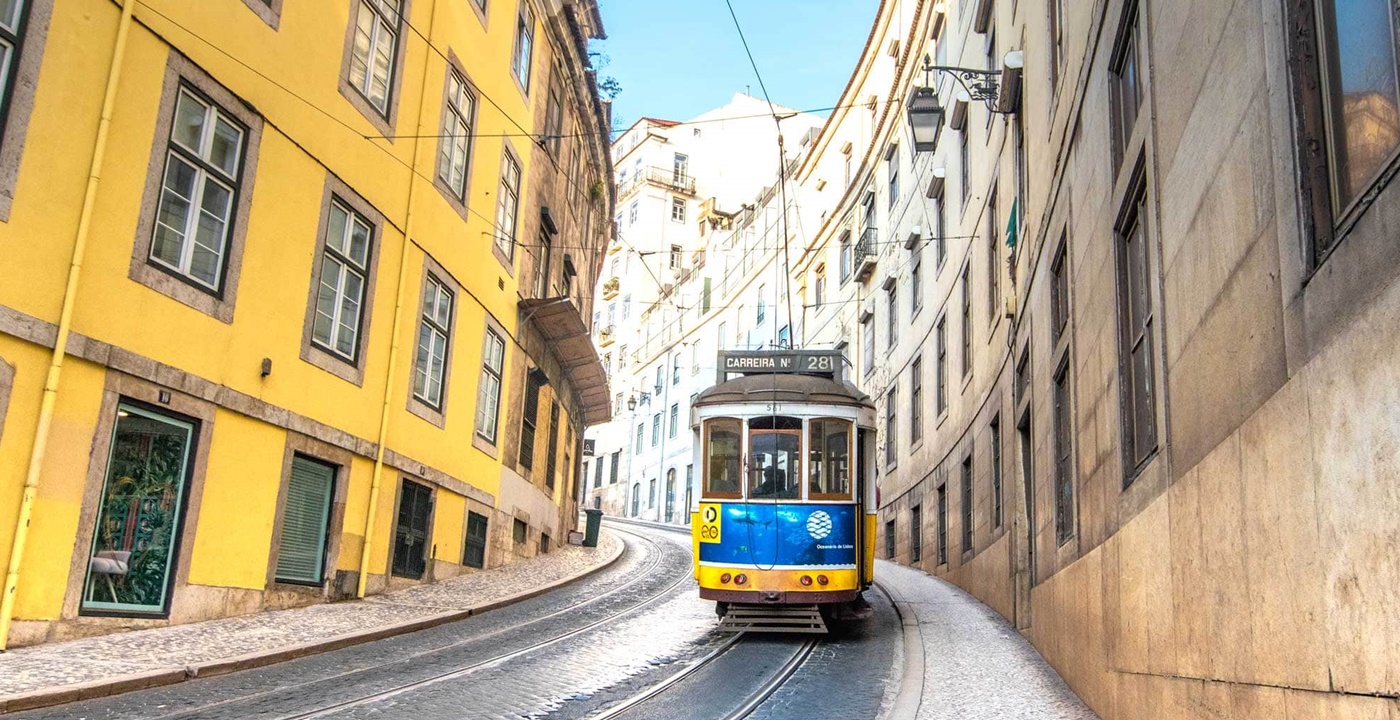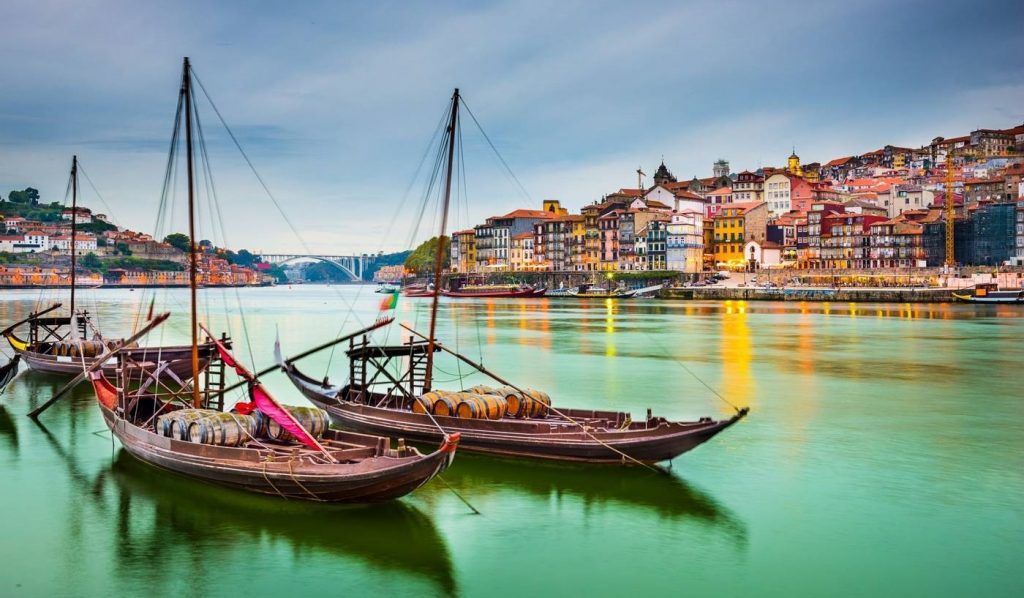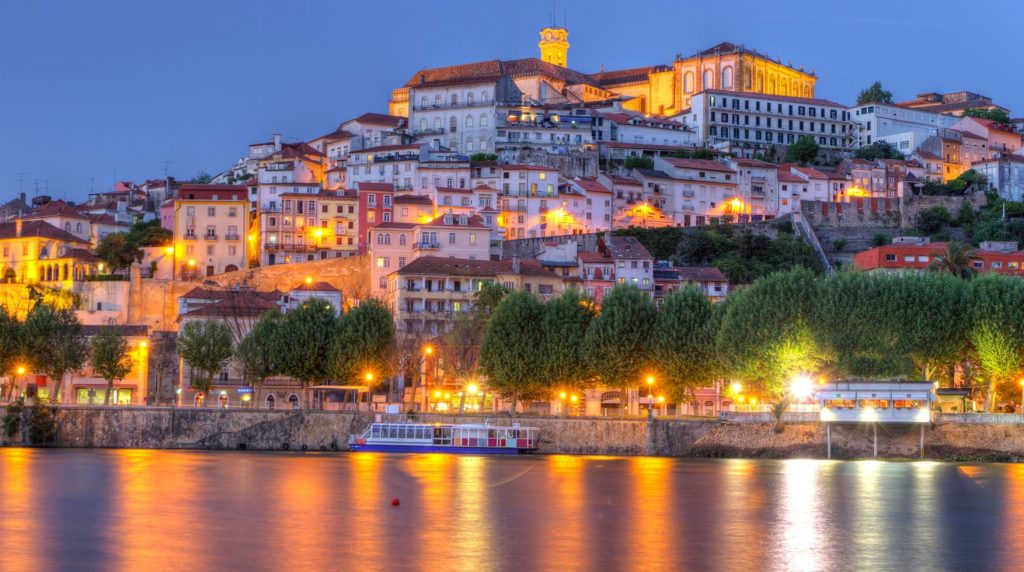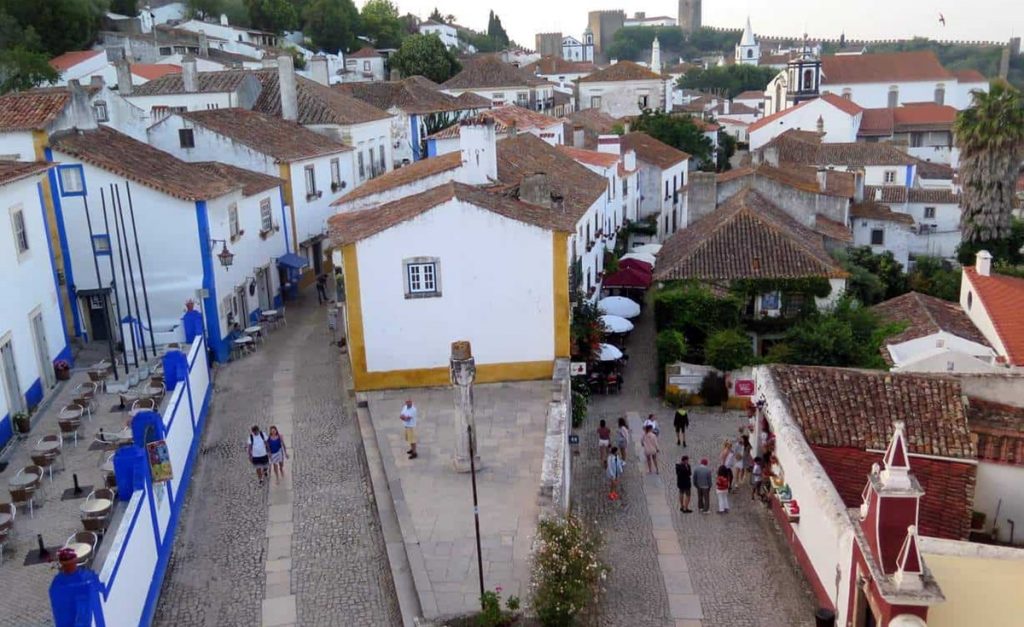
A holiday in Portugal is coming up, but you don’t know which destinations are worthwhile? Here you will find an overview of the 10 most beautiful cities in the country as inspiration for your next city trip!
The popular travel destination Portugal is bursting with worthwhile sights and cities. It is almost impossible to list them all here, which is why we would like to present our selection of the most beautiful cities for a first stay in Portugal.
Lisbon
Portugal’s capital and country’s largest city stretches along the picturesque Tagus riverbank near the Atlantic Ocean and is spread over seven steep hills. Lisbon is an enchanting destination with warm weather, winding old town streets, quaint shops, gothic cathedrals, impressive bridges and colorful neighborhoods where traditional fado music plays. The oldest district of Lisbon is Alfama, a Moorish neighborhood characterized by a maze of cobblestone streets, rustic architecture and the famous Castle of São Jorge. The best way to experience and discover Lisbon is to take a ride on one of the vintage trams, such as the well-known line 28, which meanders through historical quarters, gardens and main attractions.
Sintra
Nestled in the picturesque foothills of the Sintra Mountains on the coast, just a day trip from Portugal’s capital, Sintra awaits visitors with a spectacular backdrop of green hills dotted with pretty villas and castles and palaces such as the famous Pena Palace. This fantastic castle, reminiscent of Germany’s Neuschwanstein, is the main attraction, was built in the mid-19th century and serves as the summer residence of the Portuguese royal family. It is surrounded by wooded parks with exotic trees, plants and flowers and also offers a unique view of the idyllic surroundings. Also worth visiting are the ancient ruins of the Moorish Castle that crown the city’s highest hill and the romantic Monserrate Palace with its subtropical gardens. Due to the proximity to Lisbon, you can quickly find a cheap flight and transfer to Sintra.
Porto

World-renowned for its production of fine port wine, the bustling city of Porto sprawls across hills overlooking the Douro River in northern Portugal. In the heart of Porto is the charming pedestrianized Ribeira, an atmospheric riverside spot with live music, cafes, restaurants and plenty of street vendors selling interesting souvenirs. The Ponte Dom Luis, a double-deck metal arch bridge that connects Porto to Vila Nova de Gaia, dominates this popular touristic backdrop and makes for a unique photo opportunity. The city has many wine cellars, excellent restaurants and tapas bars, live music and harbor bars, especially for night visitors and is therefore perfect for going out. During the day you can discover the northern Portuguese architecture and many small streets and quarters.
Faro
Faro is a fascinating city that combines an interesting history, exciting tourist attractions and a wealth of Portuguese charm. Unfortunately, Faro is often overlooked as a travel destination as it is considered the main entry point to southern Portugal and therefore the Algarve because of its airport. However, if you spend some time in Faro, you can discover a wonderful and fascinating city. Faro has a well-preserved old town surrounded by Moorish city walls, while the modern but pretty city center is filled with pedestrian streets, shopping streets and peaceful squares. During the day there is a calm atmosphere in Faro, where you can watch old men playing dominoes in the squares with an excellent coffee. At night, Faro has a surprisingly vibrant and convivial nightlife.
Albufeira
Albufeira is the largest, liveliest and most energetic resort in the beautiful Algarve region of southern Portugal. Here you will find stunning sandy beaches, a wonderful climate, a wide range of restaurants and a vibrant nightlife. Albufeira has much to offer and has transformed the once peaceful fishing village into the Algarve’s most popular holiday destination. Today the place is the most popular holiday and holiday destination in the Algarve and offers a wide range of activities, attractions and hotels for all ages and all travellers, whether couples, families or singles. In addition to the many white beaches where the turquoise blue water, which is very warm in summer, invites you to sunbathe and swim, you can surf, water ski and wakeboard in Albufeira, discover the underwater world while snorkeling and diving, and take some boat trips for fishing or sightseeing. Away from the coast, it is the many fish restaurants that attract visitors with their local delicacies. The best way to get to Albufeira is to fly to Faro. From there you can explore the Algarve, for example, with a rental car!
Braga
Braga is Portugal’s fourth largest city and combines tradition and modernity in an interesting mix of typical baroque Azuelo architecture with a youthful population. Braga was named European Youth Capital in 2012 and attracts many students from the nearby University of Minho every day. The town is full of cafes, shops, restaurants and bars. Braga is really lively but also known for its religious side. As well as the local cathedral, which is the oldest in all of Portugal, is the stunning Bom Jesus do Monte, a religious retreat and sanctuary that serves as a place of pilgrimage. The place is situated on a hill in the forest and is surrounded by idyllic gardens. Visitors can climb the 116-meter-long staircase and enjoy stunning views over Braga from the top. Braga is also known for the many colorful tiles in the old town that adorn the historic buildings there. ‘Azuelos’ are a tradition in Portugal and can be particularly well discovered here.
Coimbra

A charming city on the Mondego River in central Portugal, Coimbra is home to a treasure trove of historical sites, beautiful gardens, the country’s second fado musical style (after Lisbon) and a vibrant culture emanating from one of Europe’s oldest universities. One of the best things to do in Coimbra is simply to ‘get lost’ in the historic old town and discover the many historical sights, from the impressive old cathedral to the Gothic monastery of Santa Clara-a-Velha, home to the Queen Isabel’s tomb is located. A trip to Coimbra is not complete without visiting the University of Coimbra and marveling at one of the most beautiful libraries in the world, the Joanina Library.
Funchal
Dreamily nicknamed like the ‘Island of Eternal Spring’ or the ‘Floating Garden of the Atlantic’, Madeira is a fertile oasis in the middle of the sea between Portugal and North Africa, known for its lush green landscapes, flower gardens and wines. Sights in Madeira include the Orchid Garden and the Laurissilva Forest, which contains the world’s largest collection of wild laurels. The capital and largest city of Madeira is Funchal, home to the airport, historic churches, forts, tourist resorts and restaurants, and the tree-lined Lido promenade with spectacular sea views. Madeira is particularly popular with hikers who discover the many ‘levadas’ where the island can be explored carefree in the mountainous terrain. In addition, Madeira offers many beaches that invite you to sunbathe and some insider tips, such as hidden villas and gardens, as well as sleepy fishing villages with excellent restaurants.
Obidos

Obidos is situated on a hill in the Centro region of western Portugal and is surrounded by ancient city walls. In addition to the walls, the magnificent medieval castle and historic center of Obidos are the town’s main attractions and can easily be reached on foot. A maze of narrow, cobbled streets takes visitors through bustling squares, inviting cafes, quaint shops and whitewashed houses adorned with colorful flowers. The castle with its imposing walls, huge gates, towers and battlements is now a luxurious hotel where unforgettable stays of a special kind can be spent. A visit is also possible for visitors with a smaller budget in the form of a guided tour.
Evora
Evora may be just a small town in the Alentejo plains of southern Portugal, but this gem has enormous tourist appeal. Evora, whose history dates back more than 2,000 years, was once a thriving city under Roman rule. Today, Evora is the capital of the Alentejo region, known for its well-preserved old town, which houses more than 4,000 historical monuments including ancient Roman walls and some temples. Another highlight is the 13th-century Evora Cathedral, one of the most important Gothic structures in Portugal. Not far out of town is Europe’s largest complex of prehistoric megaliths, which is also well worth a visit.


